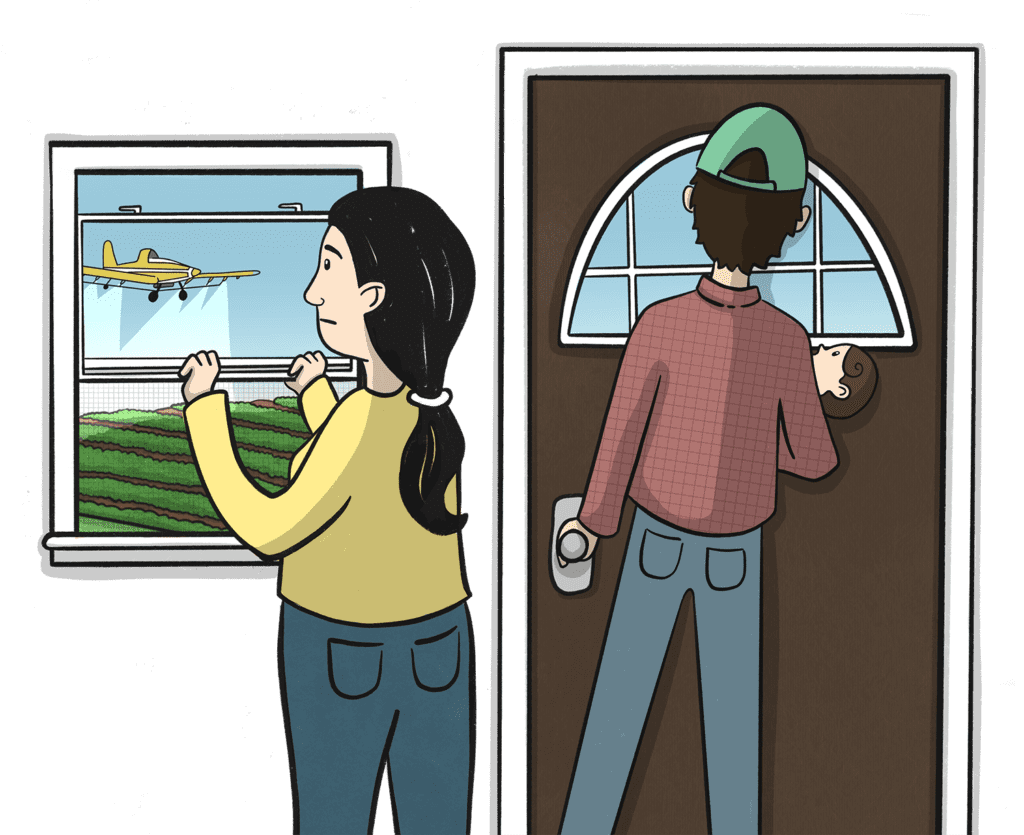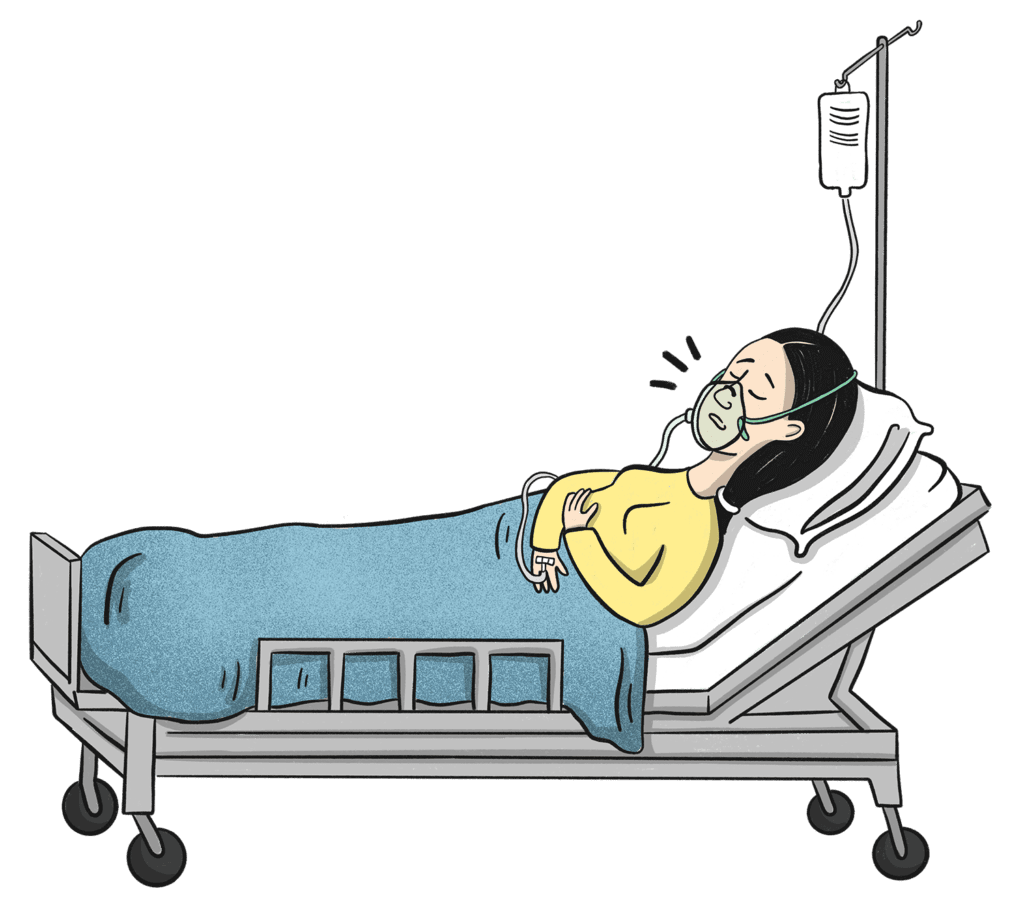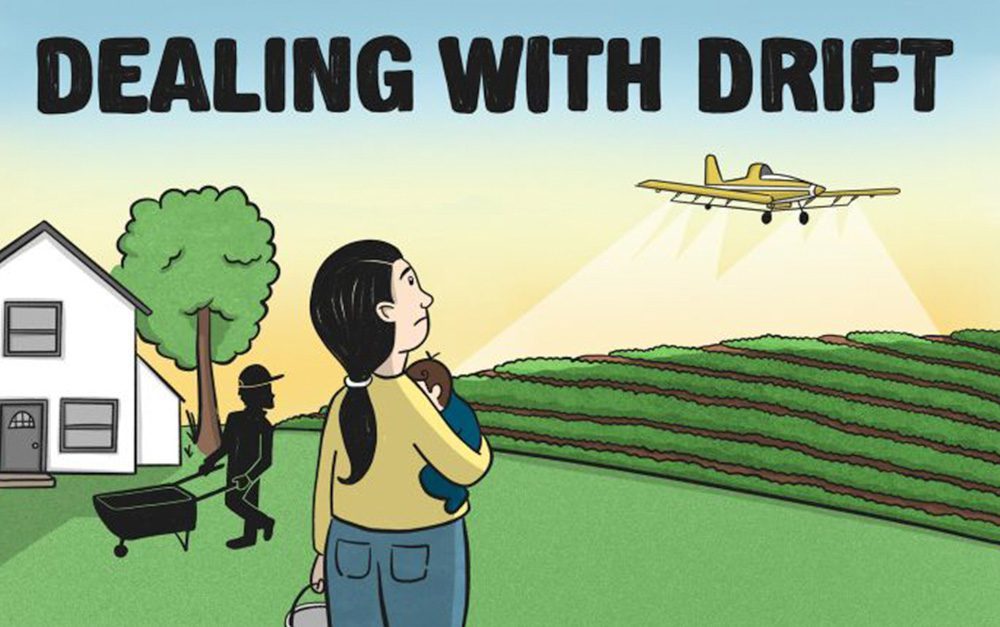It was a beautiful summer evening in 2012, and my ex-husband and I were just finishing up our chores on the small farm property we were renting. The sheep, chickens and pigs had just been fed when the crop-dusting plane flew in. My ex-husband urged me to go inside with our eight-month-old son, and I hesitated for a second, wondering whether we really needed to leave.

However, I followed his directions and went inside. We closed up all of the windows and tried to proceed with our evening, but we could hear the plane flying closer and closer to where we lived. It circled overhead, buzzing back and forth until it finally flew so low it sounded like it was going to crash into our small home. Shortly after it flew over the last time, the room I was in began to fill with a pesticide I later learned was chlorpyrifos.
The chemical was seeping into the room through the air conditioner unit. At the time, my ex-husband was trying to put our son to sleep in the living room. Even though I was surrounded by the mist, I thought to myself, “this is not real, this cannot really be happening.” The chemicals they were spraying on the adjacent field could not be drifting into our home.
But as I began coughing and having trouble breathing I finally realized we were victims of a pesticide drift incident.
We had taken every precaution once we saw the crop-dusting plane fly in. We had gone inside, closed all the windows and we should have been safe. We were not safe. I stumbled out of the bedroom and a plume of pesticides followed me. I looked at my ex-husband and told him I couldn’t breathe, and he started screaming for me to get out of the house. He grabbed the car seat, buckled my son in, and handed me two rags to put over our mouths. I remember feeling afraid of holding the cloth too tightly over my son’s tiny mouth, and the whole time I prayed he would not breathe in the pesticide. We raced into town towards the hospital while my ex-husband called our landlords to ask what exactly the plane was spraying.
Battling for breath in the ER
At the hospital, I was told that the chemical was called Lorsban (one of the trade names for chlorpyrifos). I was rushed into the ER, but they were uncertain how to treat me as they had never seen an immediate reaction like mine. As the nurses tried to radio for an airlift, they were denied because my heart rate was too high and they were concerned I would go into cardiac arrest in the helicopter. They finally — with the advice of poison control and another hospital — administered an epi-pen and steroids to stabilize me. I was instructed not to leave the hospital, because if the steroids wore off and the pesticide was still active, I may not make it through the night. This caution was necessary, as in the middle of the night I awoke to a nurse fervently shaking me, directing me to sit up. She quickly put oxygen on me as well as handed me another dose of steroids and some water.

The next morning, the nurse practitioner who was attending to my case entered my hospital room extremely upset at what she had witnessed attending to my case. She confirmed I was not the only one who had come to the hospital seeking treatments after a pesticide drift incident, but I was the most extreme case she had seen. She stated there should be some compensation on my behalf for what had happened, and also warned that she didn’t know what would happen if I was ever exposed to the pesticide again.
Starting my advocacy journey
I heeded the nurse practitioner’s warning, and started doing some research. I wanted to tell my story to bring about real change. I connected with a state-wide coalition (which later became Toxic Taters) as well as with Pesticide Action Network. I did my first interview with the Star Tribune, followed shortly after with one by Huffpost Live.

After that, I headed to Iowa with former PAN Midwest Organizing Director Linda Wells, and we presented at the Women in Food and Agriculture Network (WFAN) conference on drift-catching and pesticide drift. Linda and I had already held a training in Saint Cloud, Minnesota for women farmers and mothers to learn how to drift-catch, and to discuss the PAN report A Generation in Jeopardy. I helped publicize the release of the report at the first pesticide-free park in Minneapolis.
It was around this time that I started to think about whether my baby may be experiencing some of the developmental deficits that were outlined in A Generation in Jeopardy. My son Jayden was diagnosed with delays just three years later.
After diving into this advocacy work, I wanted to know how much drift our small piece of land had been subjected to. I collected drift samples on our land, and the levels of pesticides I caught were alarming. We were exceeding the threshold for what was recommended in 2015 as safe limits of chlorpyrifos exposure for a one-year-old child, and by 2017 the recommendations had changed to there being “no safe levels” of exposure for any child.
All in for making change
This finding cemented my commitment to advocacy. I met with staff at the Minnesota Department of Agriculture and the Minnesota Department of Health to share findings from A Generation in Jeopardy, as well as to present the data I had collected from drift-catching on our small farm operation.
In the summer of 2017, I traveled to Washington, D.C. with PAN Executive Director Kristin Schafer and helped celebrate the introduction of S.B 1624, a bill to ban chlorpyrifos nationally, on Capitol Hill with U.S. Senator Tom Udall. After I returned home I did a few media interviews about my trip to Washington, while also publicizing PAN’s new report around rural children’s health and pesticides, Kids on the Frontline.
The battle to ban chlorpyrifos seemed to be gaining traction, and I was glad to be part of the advocacy that was making it happen.

Stay tuned for “part 2” of Bonnie’s story focusing on recent state advocacy in Minnesota.








